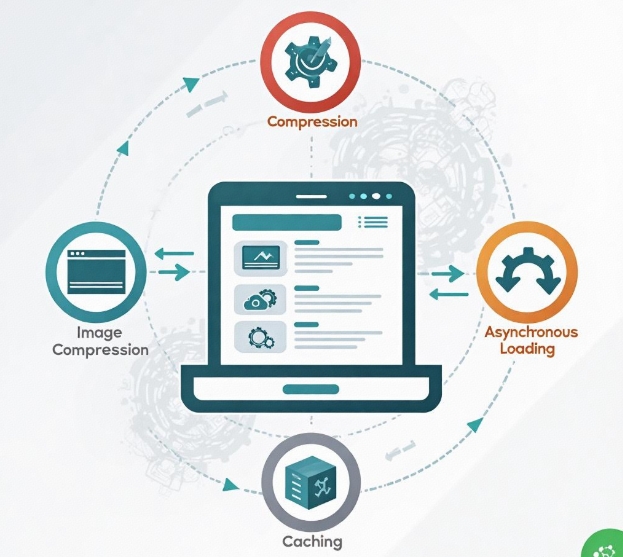Multi-Platform Compatibility and Optimization Techniques in Mini-Program Development
- latest articles
- 1.DApp Development & Customization: Merging Diverse Market Needs with User Experience 2.Analysis of the Core Technical System in DApp Project Development 3.How to achieve cross-chain interoperability in Web3 projects? 4.How does the tokenization of points reconstruct the e-commerce ecosystem? 5.How to Set and Track Data Metrics for a Points Mall? 6.What is DApp Development? Core Concepts and Technical Analysis 7.Inventory of commonly used Web3 development tools and usage tips 8.Development of a Distribution System Integrated with Social E-commerce 9.Six Key Steps for Businesses to Build a Points Mall System 10.What is DApp Development? A Comprehensive Guide from Concept to Implementation
- Popular Articles
- 1.Future Trends and Technology Predictions for APP Development in 2025 2.Analysis of the DeFi Ecosystem: How Developers Can Participate in Decentralized Finance Innovation 3.From Zero to One: How PI Mall Revolutionizes the Traditional E-commerce Model 4.DAPP Development | Best Practices for Professional Customization and Rapid Launch 5.Recommended by the Web3 developer community: the most noteworthy forums and resources 6.From Cloud Computing to Computing Power Leasing: Building a Flexible and Scalable Computing Resource Platform 7.How to Develop a Successful Douyin Mini Program: Technical Architecture and Best Practices 8.Shared Bike System APP: The Convenient Choice in the Era of Smart Travel 9.How to Create a Successful Dating App: From Needs Analysis to User Experience Design 10.From Design to Development: The Complete Process of Bringing an APP Idea to Life
With the development of mobile internet, mini-programs have gradually become a key focus for many enterprises and developers. Whether it's WeChat Mini Programs, Alipay Mini Programs, or Baidu Mini Programs, they offer convenient development methods and high user engagement. However, a major challenge developers face is ensuring compatibility across multiple platforms and optimizing them so that users on different devices can use them smoothly. This article will delve into the multi-platform compatibility issues in mini-program development and related optimization techniques to help developers enhance mini-program performance and user experience.
I. Multi-Platform Compatibility Issues in Mini-Program Development
Platform Differences
Different mini-program platforms have significant differences in technical implementation, API support, and interface rendering. For example, WeChat Mini Programs, Alipay Mini Programs, and Baidu Mini Programs provide different components and interfaces in their respective SDKs. Although their basic architectures are similar, the differences in details often lead to inconsistent performance across platforms. These differences include but are not limited to:
UI Component Differences: Different platforms have varying support for interface components, such as button styles and input box styles in WeChat and Alipay, which may be incompatible.
API Call Differences: The implementation of API interfaces varies across platforms, which may result in different levels of difficulty in implementing the same functionality or even render some interfaces unusable.
Platform-Specific Features: Some platforms offer unique features or components, such as WeChat's mini-program payment and Alipay's Huabei. These platform-specific features may not be available on other platforms, requiring developers to consider how to handle cross-platform compatibility during design.
Device Differences
Different brands and models of mobile phones vary in screen size, resolution, and performance. For mini-programs, these differences directly impact the user's operational experience. For example, a mini-program that runs smoothly on high-performance devices may experience lag on low-end devices due to insufficient performance. Additionally, varying screen sizes can lead to incompatible page layouts, causing incomplete displays or layout distortions.
Operating System Differences
Mobile operating systems also have certain differences, with iOS and Android systems implementing many aspects differently. For instance, differences in the WebView supported by Android and iOS may cause some web-based components to render differently across platforms. For mini-program developers, ensuring compatibility across different operating systems is a key concern.
II. Multi-Platform Compatibility Solutions
When facing multi-platform compatibility issues, developers can adopt the following approaches to resolve them:
Use Cross-Platform Development Frameworks
To simplify the complexity of multi-platform development, more developers are opting for cross-platform development frameworks. Using frameworks like Taro or UniApp allows compiling mini-programs for multiple platforms from a single codebase. These frameworks mask platform differences, provide unified API interfaces, and ensure consistent performance across platforms through conditional compilation and adaptation mechanisms. For example, UniApp handles differences between platforms with its built-in adaptation layer, enabling developers to use standard Vue syntax to develop mini-programs compatible with WeChat, Alipay, Baidu, and other platforms.
Multi-Platform Conditional Compilation
Although cross-platform frameworks offer great convenience, they may not fully meet developers' needs in some special cases. Here, conditional compilation becomes particularly important. Conditional compilation involves writing specific code based on the characteristics of different platforms. Developers can use conditional compilation statements to write different code for each platform. For instance, in WeChat Mini Programs, the
#ifdefsyntax can be used to write code that only takes effect on the WeChat platform.Optimize UI Components and Layouts
To address device differences, developers can optimize the UI performance of mini-programs through responsive layouts and adaptive design. Responsive layouts dynamically adjust layouts and component sizes based on the device's screen size and resolution, ensuring consistent display across devices. Techniques such as percentage-based widths and heights, and flex layouts, make page adaptation more flexible and precise on various devices.
Additionally, developers can utilize adaptation tools provided by platforms. For example, WeChat offers the "Mini Program Adapter," which helps developers test and debug mini-programs on different screen sizes. These tools enable developers to quickly identify and resolve compatibility issues.
Reduce Platform-Specific Dependencies
When developing mini-programs, avoid relying too heavily on platform-specific features. Although different platforms offer unique functions like payments, sharing, and login, these features are often unavailable on other platforms. Therefore, developers should prioritize cross-platform compatible features or provide adaptation layers for different platforms to ensure consistency. For example, separate payment interfaces can be implemented for WeChat, Alipay, and Baidu, with unified calls at the application layer.
Performance Optimization
While ensuring compatibility, performance optimization is crucial for enhancing the user experience of mini-programs. Performance differences across platforms and devices make optimization more complex. Developers can improve mini-program performance through the following methods:
Image Compression and Lazy Loading: Reduce network request delays by compressing image sizes. Additionally, using lazy loading to load images on demand can effectively improve page loading speed.
Reduce JS Computation: Minimize unnecessary JavaScript calculations and rendering to avoid page lag caused by heavy computations.
Use Caching Wisely: Leverage platform caching mechanisms to reduce frequent network requests and improve the mini-program's response speed.
Testing and Debugging
Testing is a critical step in ensuring multi-platform compatibility for mini-programs. Developers need to conduct thorough testing across different devices and operating systems to ensure the mini-program functions correctly on all platforms. Developer tools provided by platforms, such as WeChat Developer Tools and Alipay Mini Program Debugging Tools, assist with simulation and debugging. These tools allow developers to view the mini-program's performance on various devices in real-time and quickly identify issues.
III. Common Mini-Program Optimization Techniques
Lazy Loading and Asynchronous Loading
The startup speed of a mini-program is crucial to the user experience. To improve startup speed, adopt lazy loading and asynchronous loading strategies. Load non-critical resources and modules asynchronously in the background to ensure the mini-program can be presented to users as quickly as possible upon startup.Optimize Code Structure
Streamlining the mini-program's code by removing redundant code and unnecessary dependencies can effectively reduce its size and improve loading and running speeds. Use modular development to divide functionalities into independent modules for easier management and optimization.Make Rational Use of Platform APIs
Various platforms offer rich API interfaces, and developers should choose and use them appropriately based on needs. Overusing platform APIs, especially complex ones, may lead to performance degradation or compatibility issues. Therefore, selecting APIs wisely and optimizing them according to actual requirements can effectively enhance the mini-program's overall performance.Use Embedded WebView in Mini-Programs
In some special cases, developers can implement complex functionalities by embedding WebView within mini-programs. For example, when embedding web pages or third-party services, WebView provides a convenient solution. Optimizing WebView loading speed can improve the user experience.
IV. Summary
Multi-platform compatibility is a common challenge for developers, especially when developing for multiple platforms. Ensuring consistency and stability across different operating systems, devices, and platforms is a critical aspect of the optimization process. By using cross-platform development frameworks, conditional compilation, responsive layouts, performance optimization, and thorough testing, developers can effectively address these challenges and improve mini-program compatibility and user experience.
As technology continues to evolve, mini-programs will perform more stably across multiple platforms, and cross-platform development tools and techniques will become increasingly refined. By staying updated with technological trends and summarizing development experiences, developers can achieve greater success in the field of mini-program development.
-

How to Increase User Stickiness and Activity Through Mini Program Development
With the development of the internet and mobile internet, mini-programs, as an e···
-

How can mini-program development assist in corporate marketing and e-commerce transformation?
In today's rapidly evolving mobile internet landscape, corporate marketing and e···
-

Offline Functionality Design and Data Synchronization in Mini-Program Development
With the rapid development of mobile internet, mini-programs, as a lightweight a···

 Blockchain
Blockchain












